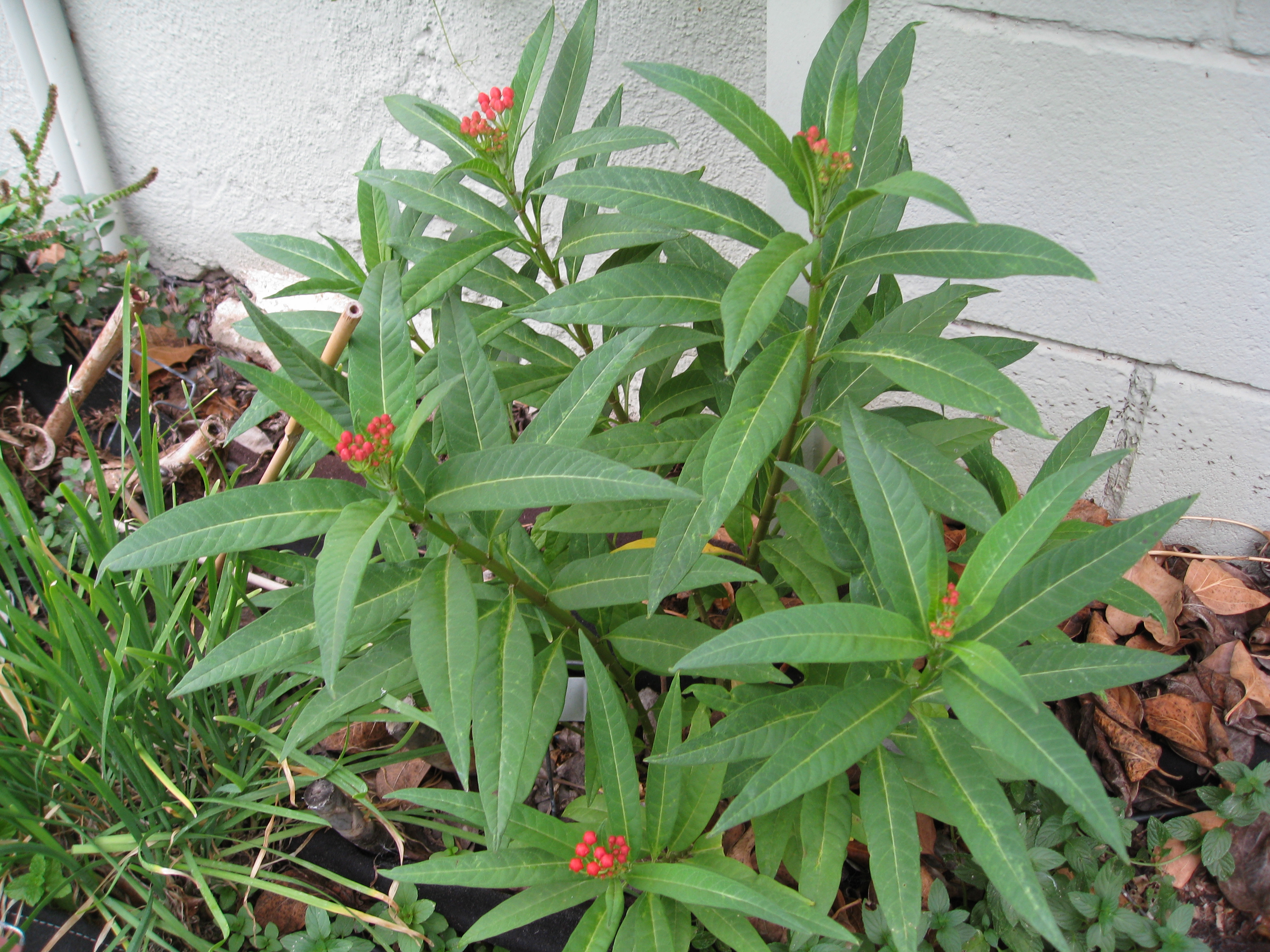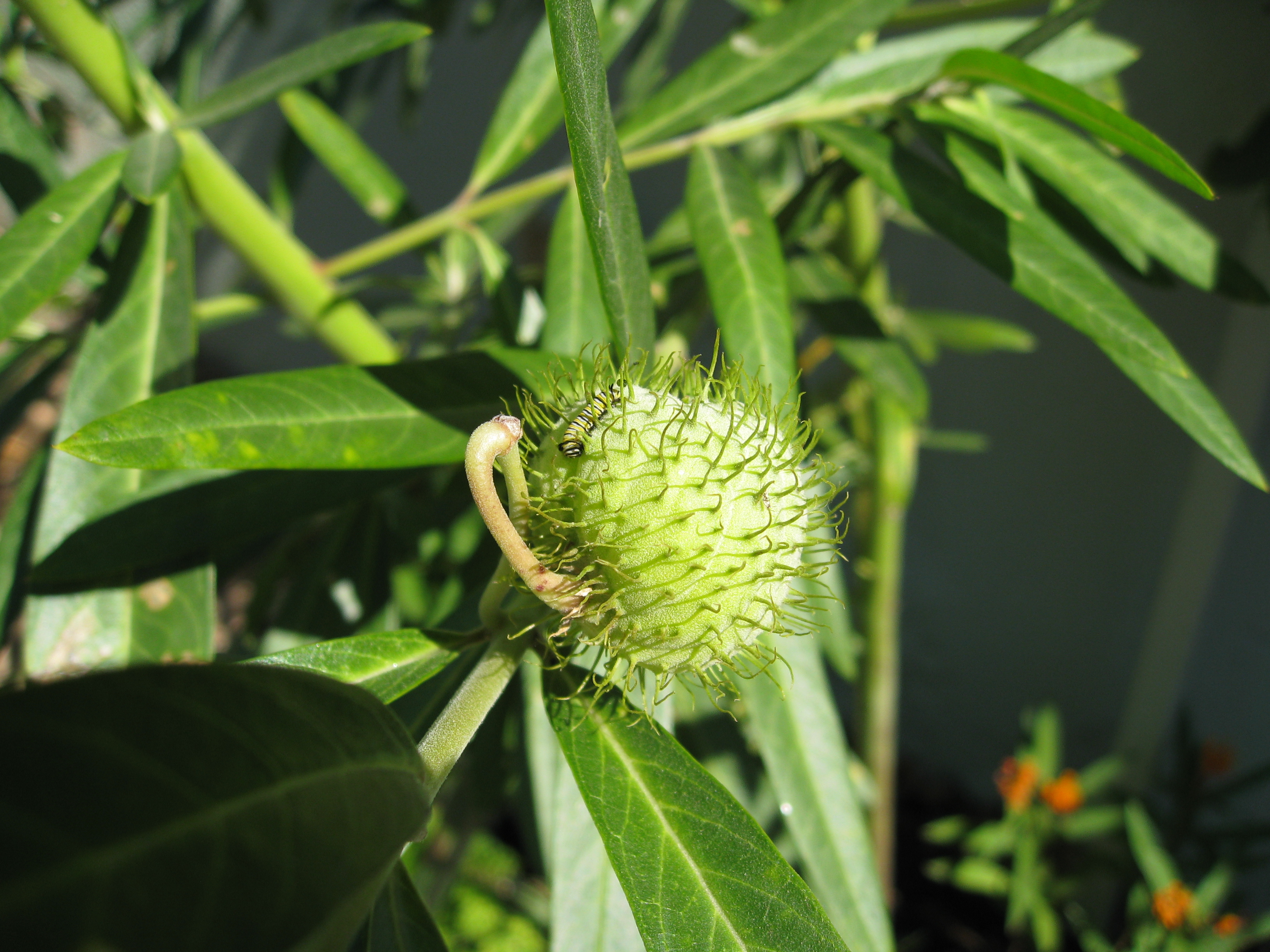A question came into Ask Gardenerd this week that I even asked myself last year:
“First year planting swamp milkweed for Monarchs – just had two butterflies exit their cocoons this morning. Had five plants this year – going big next year. Question – lots of info on how to get plants started but nothing on end of season maintenance. Should we cut back the stems on the existing plants or do we just leave them? Not sure what to do now that winter is approaching. Thanks – Bob”
You’re right, Bob, not many sites talk about what to do with the milkweed after it’s finished for the season. I ran into the issue last year when I was staring at an 8 ft. stalk of Asclepias Physocarpa, denuded after a season of successful Monarch habitation. What now? The answer is, it depends.
Annual vs. perennial – if the milkweed you are growing performs as an annual in your hardiness zone, like the Asclepias Physocarpa pictured above, you can scatter the open seed pods around the soil and cut the stalks down to the ground. The roots will dissolve over time and new plants will grow from dispersed seeds.
This milkweed was supposed to be perennial in my garden, but after waiting several months for new growth to appear (meanwhile other milkweeds were sprouting new leaves) I decided to cut it down. I left about 6″ of stem above ground, just in case it decided to leaf-out again, but it didn’t. Instead new sprouts came up from seeds I dispersed nearby.
You mentioned that you are growing swamp milkweed, Asclepias incarnata. Technically it is a perennial, but if you run into issues like I did (no leaves emerging) then re-seed and cut back old foliage.

Perennial milkweeds grow back year after year. They provide habitat for traveling Monarch butterflies.
If the milkweed is a perennial, like Asclepias curassavica (tropical milkweed) pictured above, you’ll notice tiny leaves growing from the base of the plant at some point after the upper stems have been consumed. Wait for that. Then cut back stems to the new growth and the plant will take off from there.
As a reminder, it is ideal to grow milkweeds that are native to your state if possible. In California, we have several native milkweeds, and seeds can be obtained from Theodore Payne Foundation for at least one of them.
MonarchWatch.org has a vendor list of seed sellers as well.
Thanks for writing in, Bob. Good luck with your butterfly garden!









I’m a 1st yr. Milkweeder. Not sure what type plants I have. I’ve had several sets of Monarch larva, and have seen two crystalist. I think they both failed. Located in Tulsa, OK
NOT sure when to prune, frost probably 60 days away. I think I’m seeing new seed pods forming, but as a 1st timer & not really knowing much I could use some guidance. I’ll try to attach photos.
JUST WANTED TI KNOW IF IT IS A MUST TO CUT IT DOWN BEFORE IT GET TO COLD. SO BF WILL BE ON THERE WAY TO MEX.
Yes, it’s a good idea to cut it down before winter, especially if you have a tropical milkweed. This will help prevent the spread of the pathogen that is killing Monarch caterpillars.
Hi, I live in Col. Ohio, I have had the same milkweed bush grow for 3 yrs., it has grown nicely, first yrs. never seen any caterpillars but plenty of seed pods, now my bush is going to seed pods already, had plenty of honey bees but no butterflies, why are they getting seed pods already, and can I cut it back once the seeds are done forming?
Hi Jewell,
It could be a number of factors contributing to your milkweed bolting to seed so soon. Stress is the usual culprit. High temperatures, lack of water, etc., can cause plants to give up the ghost early. Compacted soils may cause other problems. If the plant already has seed pods, I’d let it go to seed and collect them for next year. Each generation is more adapted to your climate, so this seed may do better than your original plant.
Hi,
I planted about 7 milkweed behind my home on a slope. They did very well over last winter and spring and this year seem to appear to be dead. Not sure what happened. Does anyone think these plants will come back in spring or did I lose them? I know I have aphids on the ones in my yard and I smash and rinse those off but can’t reach the ones on the hill. Do you think this may have killed them?
I do not want to replace them if it is going to be a recurring problem. I guess I should have mentioned I am in Orange County California and these are the ones that were native to my area.
Hosing off the aphids most likely didn’t kill your plants. They may come back. It’s hard to assess from the description. Give them another month, if they don’t leaf out or start sending up new shoots, start over. It’s important to keep in mind that some milkweeds are annuals and some are perennials. You may want to check with the nursery where you bought them, or read up on the variety online to see what the behavioral pattern is for that particular variety. Thanks for writing in. I hope this helps.
I live in santa barbara and we had aphids on our milkweed as well. We hosed them off and we had sticks in a pot for the winter. To my surprise they came back strong this spring!
We have a milkweed (Asclepias curassavica) from Home Depot here in San Diego (Vigoro Brand). It did very well over the growing season. It says it is perennial on the pot tag. How much do we cut it back? Also, I did gather seeds from one of the seedpods and I have sprouted 4 plants in small seed pots to plant later on.
HI John,
I’ve heard differing opinions on how far back to cut it. Some say down the the ground, others day leave about 4″ above soil level. The folks at Monarch Joint Venture recommend cutting back to 6″ above soil level and regular cuttings through fall and winter to help eliminate OE spores. They also recommend gradually replacing those plants with native varieties to eliminate the problem altogether. Here is their publication on the subject: http://monarchjointventure.org/images/uploads/documents/Oe_fact_sheet.pdf
How did your caterpillars do on that brand? Just bought home from HD and they said it isn’t sprayed but I’m paranoid.
I’m not sure what you mean by brand, but I grew them from seed, rather than buying plants at a nursery. We had tons of caterpillars that year.
I purchased 7 plants from HD this season and have many caterpillars and eggs. I too was nervous but was VERY pleased! Good luck.
John, please be careful when buying plants from Home Depot and Lowes. Many of their flowering plants were tested and half of them were loaded with systemic pesticides. One customer took a swamp milkweed plant back because it killed the monarch caterpillars. They use neonic pesticides which harm butterflies, honeybees, and bumblebees. I buy from nurseries which do not use pesticides on any of their flowering plants. You can find many nurseries which do not use pesticides on any plants that attract pollinators.